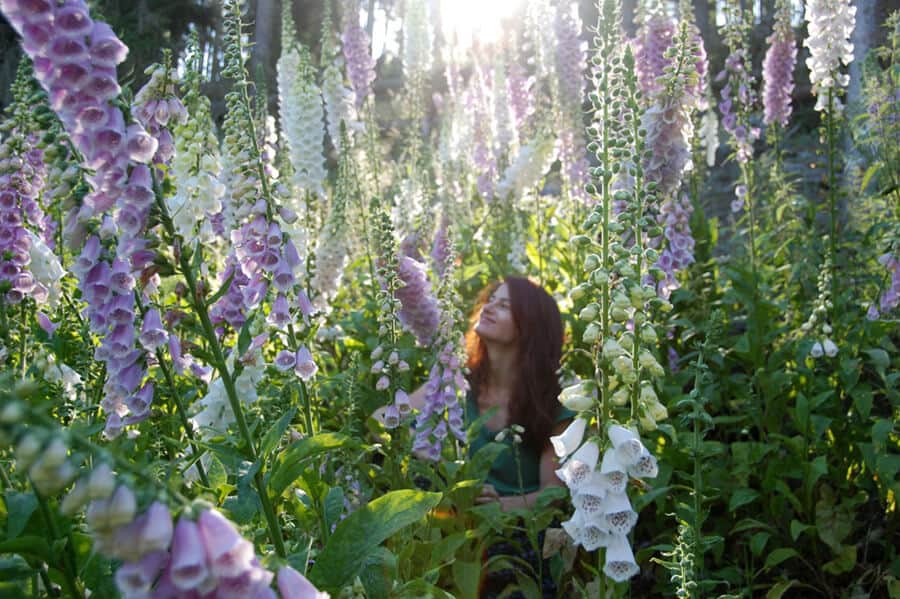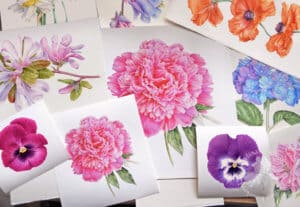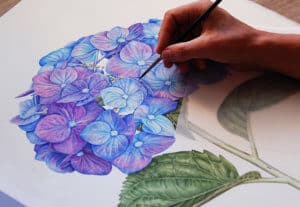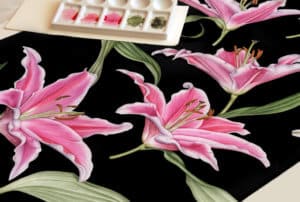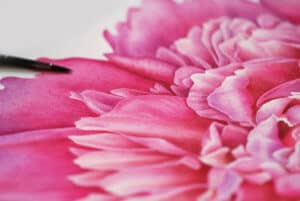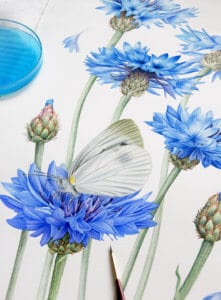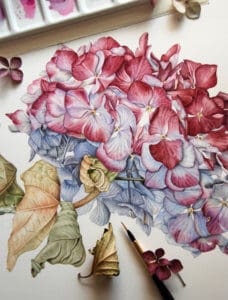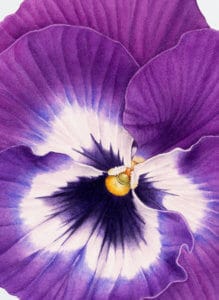How is it to work as a botanical artist, bringing nature’s precision and beauty to life in a different for? In the second part of our interview with Pavlina Kourkova we discuss these questions as well as the different aspects of her work, her experience in Transylvania, her personal life and her message to the youth of today.
How is it to work as a botanical artist, bringing nature’s precision and beauty to life in a different for?
In the second part of our interview with Pavlina Kourkova, we discuss these questions as well as the different aspects of her work, her experience in Transylvania, the personal life of Pavlina Kourkova and her message to the youth of today.
If you want to read part one head here.
Working It Out
Professionally, do you see yourself as a botanical artist and more? Please tell us about it.
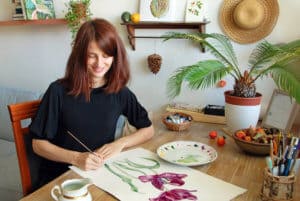
I currently work as a botanical artist and I am very pleased and happy about that. I am grateful to be able to do and make a living from what I enjoy most in life.
Not everyone has such an opportunity and luck. In fact, the beginnings were not easy and there were really tough times. When there were not many commissions, I painted my own artworks and believed it would work out somehow.
Then I offered them for sale and people were interested in them and started buying them. Over time I was able to make a living mostly from my artworks and take less and less commissions.
When a difficulty comes, you never know where it can lead you and it can often turn into something good. I still feel I like improving in painting and try to explore and push my possibilities and boundaries.
What I enjoy the most is that I can share the joy of discovering the beauty of nature with other people. For me it is primarily the celebration of plants.
Your work has such precision and beauty. How long at an average does it take you to make each painting?
It’s very individual. It depends on the size of the artwork and the technique I use. However, my work is very time consuming. Usually one painting takes me two or three weeks.
But there are also paintings that I have spent a month on. It is more a sort of meditative process really. While painting I often listen to some stories or audiobooks.
Sometimes I would like to speed up the whole painting process, but it doesn’t really work like that. If I want to accurately draw even the smallest detail of a flower, I can’t rush it.
Since I was a child I have loved to observe various details on things and like to capture them. And it takes time, a lot of time.
And how long does it take you to make each packaging design?
That is more or less the same. It doesn’t usually take several weeks, but always a few days to a week. It depends on each individual assignment and the client’s idea.
In addition, I have to draw a sketch here first. The client then agrees or makes some comments on it and we try to find the best final result. Then I make the final painting.
The whole painting process is slowing down because of that. The problem occurs when you have a customer for whom it was too late even yesterday. This is actually quite common nowadays, especially with bigger companies and it goes against my nature.
The quality of the finished artwork is my highest priority and I don’t regret the time spent working to achieve the best possible result. And the opposite, I don’t like when the quality of artwork has to be decreased due to lack of time or money.
Art Sells
Great work always sells and yours surely is. Tell us about the commercial aspects of your profession. What kind of clients do you wish would get in touch with you?
Thank you. I actually never thought about it in such a way that I would like to have some special kind of customers. It’s important to me that my art makes people happy and they enjoy them.
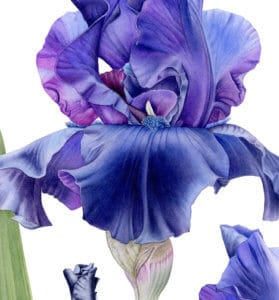
I try to convey to them the beauty of flowers that I perceive myself while painting them. I like the idea that people can be surrounded by their favourite flowers, not only in the gardens, but also at home. And these don’t even fade over time.
The role of nature is nowadays often underestimated, despite the fact, that the plants play a vital and irreplaceable role in our lives. I hope that my paintings and the botanical art in general can help to shift awareness back to nature.
I sell not only originals, but also fine art prints, which are affordable for basically every flower lover.
Please tell us about your work in Transylvania. What did you think about the region?
I was in Transylvania for the first time a few years ago with my friends on holiday. I was very excited about this part of Romania because there is a beautiful landscape and nature.
With meadows, forests, mountains, it’s full of colours and beautiful flowers. And that is a great joy, especially for a botanical artist. This year I received an offer from Rachel and James de Candole to lead a masterclass of botanical painting in their lovely botanical art space called Pod.
I was happy to accept it and we agreed on June next year. It will be right in the middle of Transylvania in the village of Copsa Mare. It will be for a small group of students and I will teach the painting of plants that commonly grow in this region.
I believe it will be a relaxing time in a beautiful romantic settlement where we will work, walk and have nice creative time together.
Your work is your hobby and passion. What do you do when you are not working?
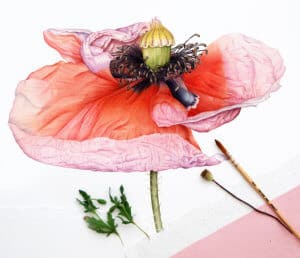
When I’m not working, I like to go for walks or trips in nature, where I can take a break from painting and sitting at a table for a long time. My work is very challenging for the eyes, especially in winter, when there is less light and I have to use artificial light, and walking and relaxing my eyes in nature is almost a necessity for me.
Sometimes it’s a bit of a problem that when I walk in nature, I often find something that appeals to me and that I would like to paint. Then I actually bring home another work.
That’s why I have also a sketchbook for faster drawings. In summer I like to go swimming in a nearby river. It is great and very refreshing. I also like to spend time with my sisters and parents who live in my hometown.
Botanical art is also supported by Prince Charles. Have you had the opportunity to meet him?
I have not personally met Prince Charles, but I would really like such an opportunity, mainly because I see him as a very inspiring person. He is involved and supports many interesting projects and activities.
He is well known also as a passionate gardener and organic farmer and the garden at Highgrove is a beautiful example of that. I like his environmental philosophy, which it is better to work with nature than against it.
Sometimes he even organises workshops on painting flowers from the garden. When he first visited Transylvania in 1998, he was overwhelmed by its unique beauty. He suggested it to be recorded and so the idea came to create the Transylvanian Florilegium, a two-volume book with over 100 illustrations of local plants drawn by 35 artists from all around the world.
The books will also be available for studying during our workshop in Copsa Mare next year.
Moving Home
What was your motivation and desire that made you want to return to the Czech Republic?
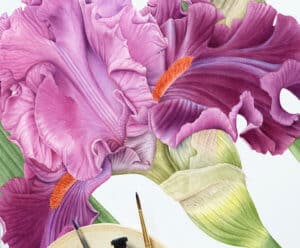
That is an interesting question. It was more of an intuitive decision and, above all, probably just homesickness and missing my family and friends. I also missed my native language and the Czech landscape with all its beauties and I wanted to settle down a bit.
I have spent several years abroad since my study years. I was moving quite a lot and experienced various environments. First it was studying in the Netherlands and then working and living in different places in England.
During my studies, I also had the opportunity to take part in an expedition to refugee camps located in the southwestern part of Algeria and the eastern part of Western Sahara.
That was a beautiful experience too. Sahrawi people, who live there, live in very modest and difficult conditions. And it was just where I could see that people’s satisfaction is not determined by material things and money.
But back to your question, yes, probably it was just a wish to reconnect with my roots.
Our readers are mainly young professionals in different parts of the world. A word of advice for them?
I send greetings to all your readers around the world. What would I advise them? I don’t know if I can advise them anything specific, perhaps only if they have something they really enjoy, a dream about their job, just go for it and don’t be discouraged.
Believe in yourself and don’t push too hard. Patience, gratitude and diligence will always be good companions on your journey.
Every beginning is usually difficult and sometimes it takes longer for your dreams to come true. Even my beginning was not easy when I decided to try to make a living as a painter and there were a lot of obstacles.
But it is definitely worth trying to overcome them all, step by step, and not giving up when something doesn’t work right away. I wish everyone to be happy and well.
Photos: From the Archive of Pavlina Kourkova
Want to catch up with the first part of this interview with Pavlina Kourkova? Head here:
Support us!
All your donations will be used to pay the magazine’s journalists and to support the ongoing costs of maintaining the site.
Share this post
Interested in co-operating with us?
We are open to co-operation from writers and businesses alike. You can reach us on our email at [email protected]/[email protected] and we will get back to you as quick as we can.
